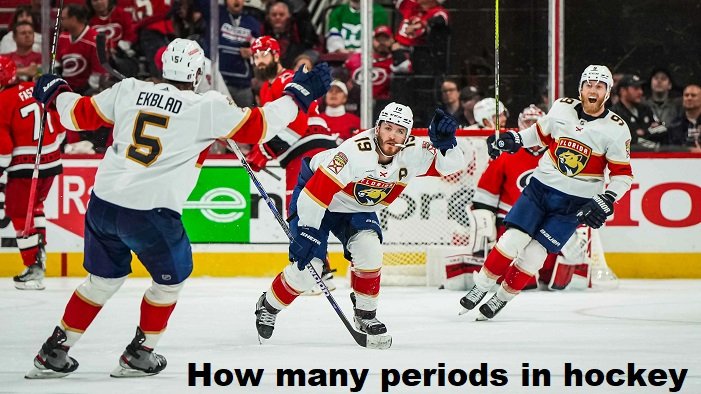How Many Periods Are in a Hockey Game? Everything You Need to Know!

Table of Contents
ToggleThe Basics: Standard Periods in Hockey
How Many Periods Are in a Hockey Game?
A standard hockey game is divided into three periods. Each period lasts 20 minutes, with a 15-20 minute intermission between periods.
This structure is consistent across most professional leagues, including the NHL (National Hockey League), and many amateur and youth leagues.
Why Three Periods?
The three-period format was adopted to allow players to rest and recover between segments of intense play. This structure also provides opportunities for strategic adjustments and keeps the game dynamic and exciting for fans.
Overtime and Shootouts: Beyond the Standard Three Periods
Regular Season Overtime
If a game is tied at the end of the third period during the regular season, it moves into overtime. Overtime is a 5-minute period played with fewer skaters (usually 3-on-3) to increase the chances of scoring. The first team to score during overtime wins the game, a format known as “sudden death.”
Shootouts
If the game remains tied after the overtime period, it proceeds to a shootout. Each team selects three players to take turns attempting to score against the opposing goalie.
If still tied after the initial three rounds, the shootout continues in a sudden-death format until one team scores and the other does not.
Playoff Overtime
In contrast to the regular season, playoff games do not use a shootout to determine the winner. Instead, they play continuous 20-minute overtime periods until a goal is scored.
This can lead to games extending into multiple overtime periods, adding to the intensity and drama of playoff hockey.
Special Situations: Variations in Period Length and Structure
Youth and Amateur Hockey
In youth and amateur hockey, the length of each period can vary depending on the age group and league rules. For instance, younger age groups might play shorter periods, such as 12 or 15 minutes, to accommodate their stamina and skill levels.
International Hockey
International hockey games, governed by the IIHF (International Ice Hockey Federation), also follow the three-period structure.
However, there can be slight variations in rules and overtime formats, especially during international tournaments.
The Impact of Period Structure on Gameplay
Strategy and Pacing
The three-period structure allows for distinct phases within a game, where teams can implement different strategies based on the score and game situation. Coaches can make crucial adjustments during intermissions, while players can recuperate and refocus.
Player Endurance and Performance
Having three periods with breaks in between helps manage player fatigue and maintains a high level of performance throughout the game. This pacing is essential in a sport as physically demanding as hockey.
Read More:
Discover the Magic of SSStik: Effortless TikTok Video Downloads
Conclusion
Understanding the structure of hockey periods is fundamental for appreciating the flow and strategy of the game. With three standard periods, potential overtime, and shootouts, the format is designed to balance intense action with opportunities for rest and strategic adjustments.
Whether you’re watching a local youth game or an intense NHL playoff matchup, knowing how the periods work will enhance your enjoyment and comprehension of this thrilling sport.
Stay tuned for more insights and tips on enjoying and understanding the wonderful world of hockey!




